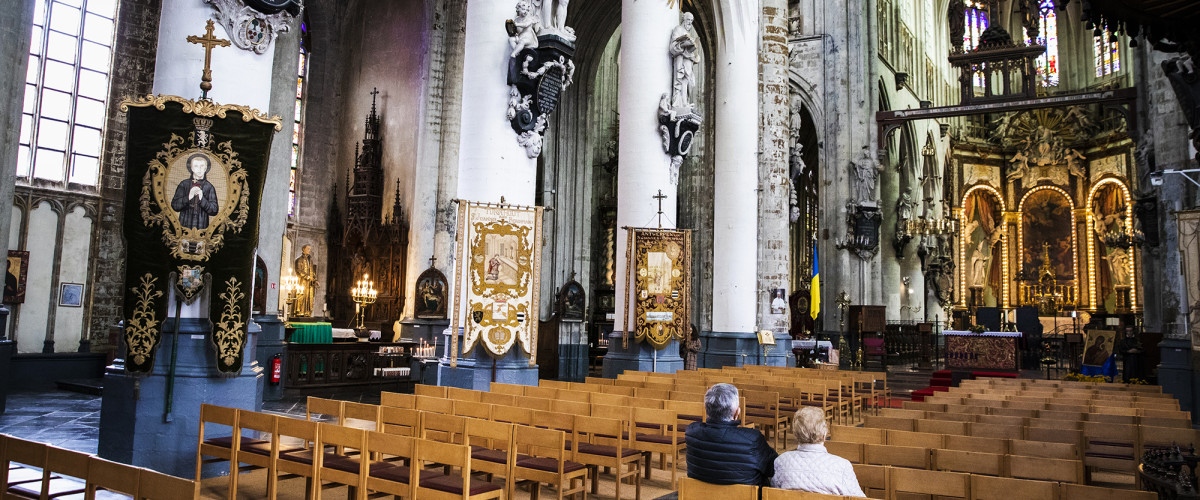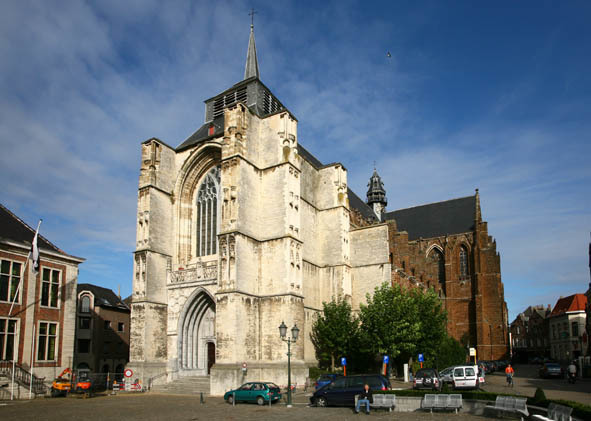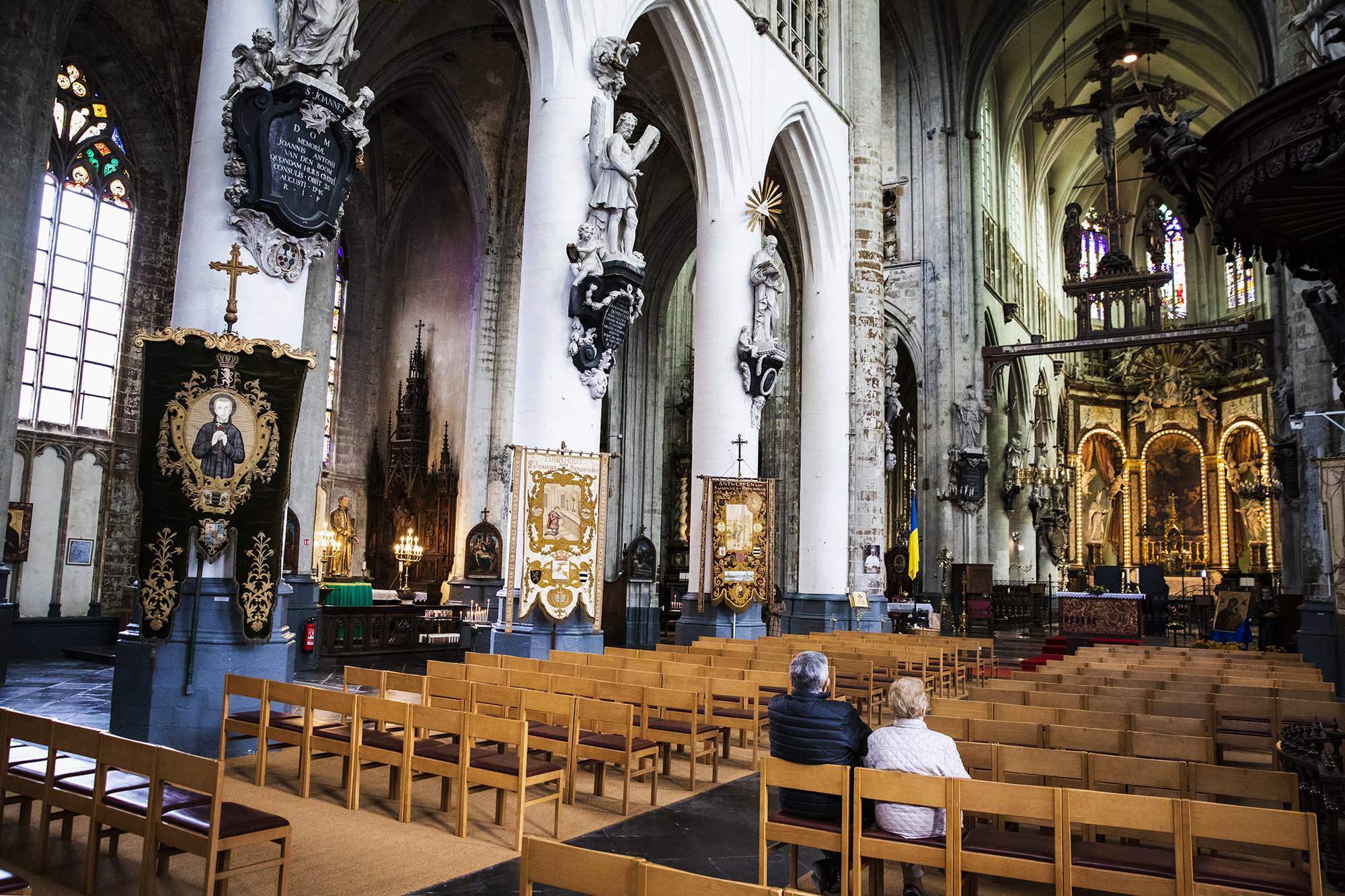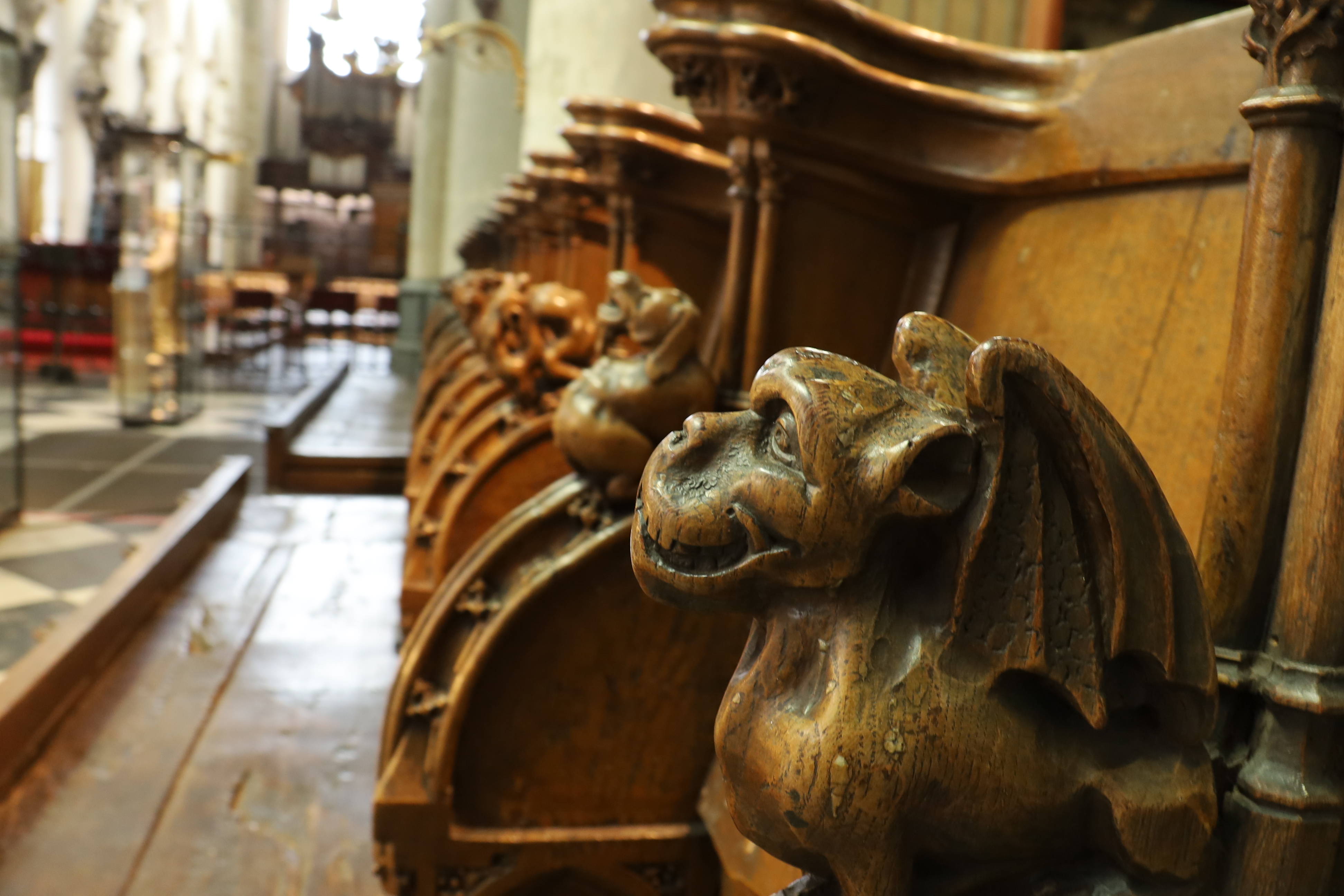Explore Diest and be charmed by exceptional masterpieces! Depart from the beguinage, the former walled community of women within the city. Then continue on to the Sint-Sulpitiuskerk on the Grote Markt, in search of the Madonna of Diest, to conclude your visit at the De Hofstadt museum with several female masterpieces.
Saint Sulpicius Church
The monumental Saint Sulpicius Church was built between 1320 and 1537 using local ironstone and white sandstone. It was, however, never completed due to lack of money. For example, three apsidioles are still missing from the chancel and the construction of the tower was halted in 1534. Minor alterations were made during the next few centuries as a result of which mainly the interior of the original Gothic church acquired more of a Baroque appearance. The lavish art collection forms the core of the Museum of Religious Art, which is situated around the chancel section of this main church in Diest. The Royal Friends of Sint-Sulpitiuskerk association was established in 1968. The main purpose of this association of volunteers is to safeguard this splendid art collection and make it more accessible.
Jan De Haen - The Ascension and Coronation of Mary
The former altarpiece dating back to 1596 and depicting the Assumption of Mary by Jan De Haen clearly demonstrates that Sint-Sulpitiuskerk is dedicated to the devotion of Mary. It was commissioned for the church’s new main altar because the previous one was damaged during the occupation of the city by William of Orange's troops between 1580 and 1583. It remained the altarpiece until the current main altar was erected in the 18th century. Today, the painting hangs to the left of the statue of Our Lady of Diest in the north transept. Jan de Haen was active as a painter in Diest during the last quarter of the 16th and early 17th centuries.
In the foreground of the painting Mary Magdalene and Mary Salome are standing near Mary's tomb. Behind them the apostles are looking in admiration at Mary being carried up to heaven by angels. Two angels are placing a crown on her head, symbolizing Mary as Queen of Heaven. Appearing between the clouds from left to right are Aaron, Moses with the stone tablets, Eve, David with his harp, Isaias and Adam. The scene is set against a background featuring a beautiful mountain landscape.
Practical information
Accessibility
Easy access for people with disabilities.
Facilities for the visually impaired.



